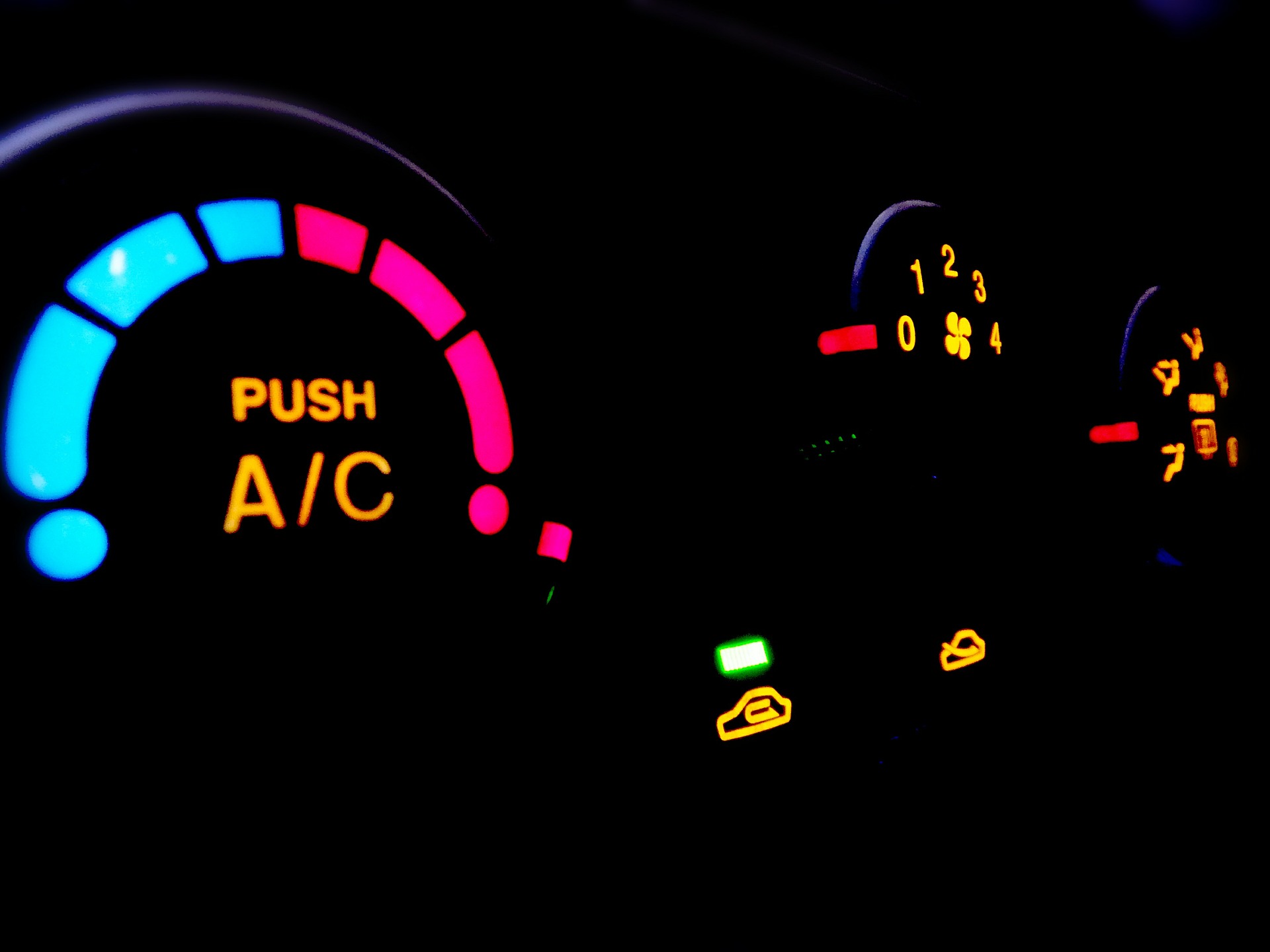Being in a car on a hot day is never fun, and having the windows rolled down doesn’t always bring relief, especially when temperatures rise above 90 degrees Fahrenheit. In addition to providing some comfort, air conditioning (A/C) can ensure passenger safety by preventing the car’s interior from reaching dangerous temperatures.
If your car’s A/C isn’t cooling well, determining where the problem lies can prove challenging. Taking your vehicle to a certified technician will be your best bet for getting your A/C repaired. However, it is good for any vehicle owner to know what might be causing the problem.
Here, we’ll take a look at some of the most common causes of A/C failure and how to address them.
Leaking Refrigerant
During warmer months, you might observe a puddle on the ground as a car leaves a parking space. Often, this is not the result of a leak, but harmless condensation. However, if the puddle has a green or yellow tint and/or a distinctive sweet odor, it might be refrigerant leaking from the car’s A/C rather than just condensation.
Refrigerant usually begins to leak whenever the A/C is used. The difficulty lies in determining the source of the leak, which will usually be found where a hose connects to the unit. If a greasy liquid is present at any such juncture, it is most likely the source of the leak.
In any case, this problem can typically be fixed by applying a sealant that is specific to auto A/Cs. If you don’t feel comfortable performing this type of maintenance, take your car to an experienced technician.
Blocked or Broken Condenser
The main purpose of the A/C’s condenser is to keep the refrigerant cool after compression. When you drive your car, outside air enters the system’s air intake valve, where it will be cooled by the airflow the vehicle receives while driving, but if the condenser or related parts get dirty, airflow will be hampered. When this happens, the coolant remains hot and will therefore circulate hot air that should have been cooled.
Most of your vehicle’s condensing parts are located behind the grill. If there is nothing causing a blockage or it doesn’t look dirty or broken, you will need to continue troubleshooting or take your car to a mechanic.
Electrical Problems
Sometimes, the electrical systems of new cars can experience electrical problems due to an electrical short or faulty wiring to the vehicle’s cooling system. Trying to determine if such a system is causing the problem can be difficult to determine for someone who is not a trained mechanic. Although automotive problems can be complex, some of them can be easy to pinpoint.
Inspect your A/C system. Look for any wires that are frayed or exposed. Without the engine started, apply electrical tape as a temporary fix if you feel comfortable doing so. It cannot be stressed enough that this is a temporary solution, and it is generally inadvisable to touch electrical components.
Inoperative Cooling Fans
If your car’s cooling fan goes bad, it could cause the unit to blow hot air. A quick visual inspection will reveal if your car’s cooling fan has become inoperative. Fans can become damaged as a part of normal wear and tear, and one of the most common causes of damage to a fan results from road debris striking it. There is no quick fix for an inoperative cooling fan; unfortunately, it will need to be replaced to rectify the issue.
If you don’t find any visible damage upon inspection, double-check the fuse to ensure that it has not blown. Depending on the location of the associated fuse, you may be able to change it yourself. If you change the fuse and the fan still fails to function, consult a professional mechanic.
Faulty Compression
The job of this A/C component is to ensure that the air-conditioned air moves continuously. If the compression becomes defective, then the A/C will not be able to facilitate airflow throughout to supply the necessary cold air. Often, compression will become difficult when the compressor is activated less frequently than intended by design. So, when it is activated during the summer months after a long winter of inactivity, the A/C will experience a bit of a jolt.
If you don’t want to go through the hassle of replacing the compressor, then you should run your car’s A/C for a few minutes throughout the time, like the winter months, when you would otherwise be disinclined to do so.
Conclusion
Although it is a hassle when a new car’s A/C ceases to function properly, the fact that a repair or replacement may not cost much is perhaps some consolation; if your vehicle is newer and still under warranty, you may not have to pay out of pocket at all. Although many of these A/C issues may seem easy to fix on your own, it is always good to seek the advice of a professional.

